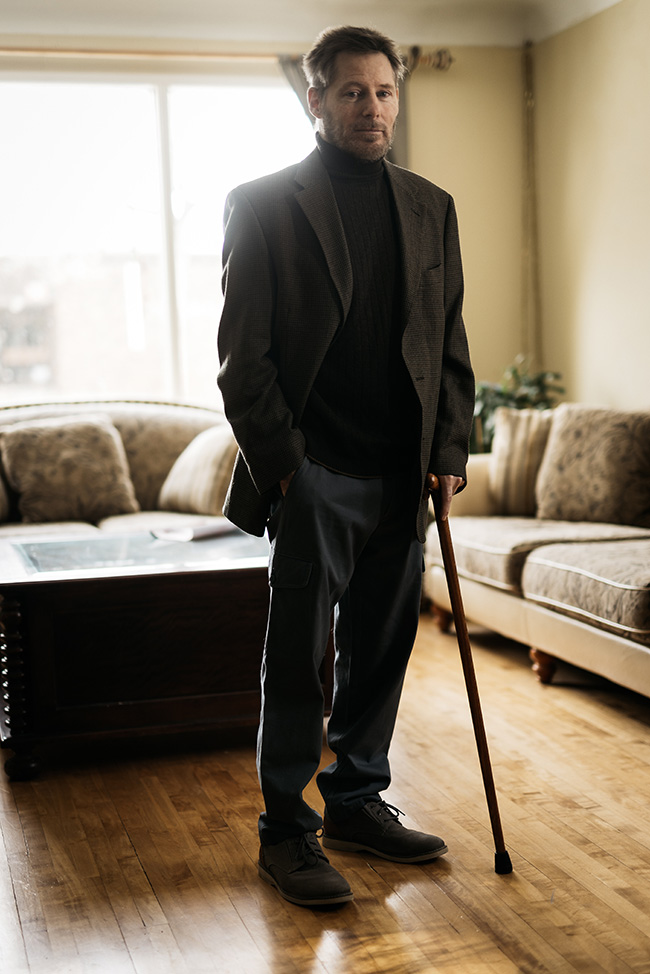- 1-833-448-3843 Make a call.
- info@givetouhf.ca Drop us an email.
- We are located in Edmonton, Alberta
The Magic of Rehabilitation
The official cause of Bill Stephenson’s plane crash was engine failure after takeoff.
 He recalls blacking out just before hitting the ground.
He recalls blacking out just before hitting the ground.
Minutes later, he regained consciousness to the sound of someone asking if he knew what his name was. He responded with the right answer, but he had bigger concerns on his mind — he had no feeling in his legs, feet or toes.
Flown by air ambulance from the crash site at the Wetaskiwin airport to the University of Alberta Hospital (UAH), Bill underwent several hours of surgery on his shattered spine. He also had 12 broken ribs. Everything else, he says, “was just fine.”
A few days later, he had a talk with his physician. “I asked him, ‘Do you think I’ll ever walk again?’ And he goes, ‘Well, there’s always hope you can do this and this.’ And I said, ‘In your experience with this extent of injury, have you seen anyone walk from it?’ And he just shook his head. So I was like, you know, that’s it for me.”
But, it wasn’t. True to his nature, Bill did not accept his surgeon’s prognosis as final. “I’m a very active person. I have my own gym in the house. I’m a portrait artist. I play piano and flute. I fly airplanes. I have a farm. I used to raise Highland cattle. So yeah. When they offered me rehabilitation, I took it.”
Dr. Chester Ho, a physiatrist at the UAH who specializes in rehabilitation after neurologic injuries, saw potential in Bill immediately after his initial evaluation in the intensive care unit. “We identified him as someone who could recover with the right rehabilitation. We started his training on Functional Electrical Stimulation (FES) cycling to harness the neurorecovery potential.”
Using hydrogel electrodes placed strategically on his legs, Bill’s muscles began responding to the stimulation.
Days later, he felt a faint tingle in his left foot. “They said, ‘Can you move your feet?’ and suddenly I could. Just barely, but that was the start of it.”
Six months later, Bill now walks unaided in his house and with a walker when he goes outside, but, even that is temporary, he says.
For patients with debilitating brain and spinal cord injuries, early access to advanced rehabilitation is critical to recovery. Currently, the wait is between 15-25 days before they’re transferred to a rehab facility.
A new, state-of-the-art Neuro-Rehabilitation Innovation Centre at the UAH will provide patients with convenient and early access to innovative treatments and state-of-the-art technology. Led by Dr. Ho, the new centre will also serve as an advanced research hub for neurologic centres across North America.
By supporting the University Hospital Foundation, you are supporting patient care and research here in Edmonton and potentially around the world.
